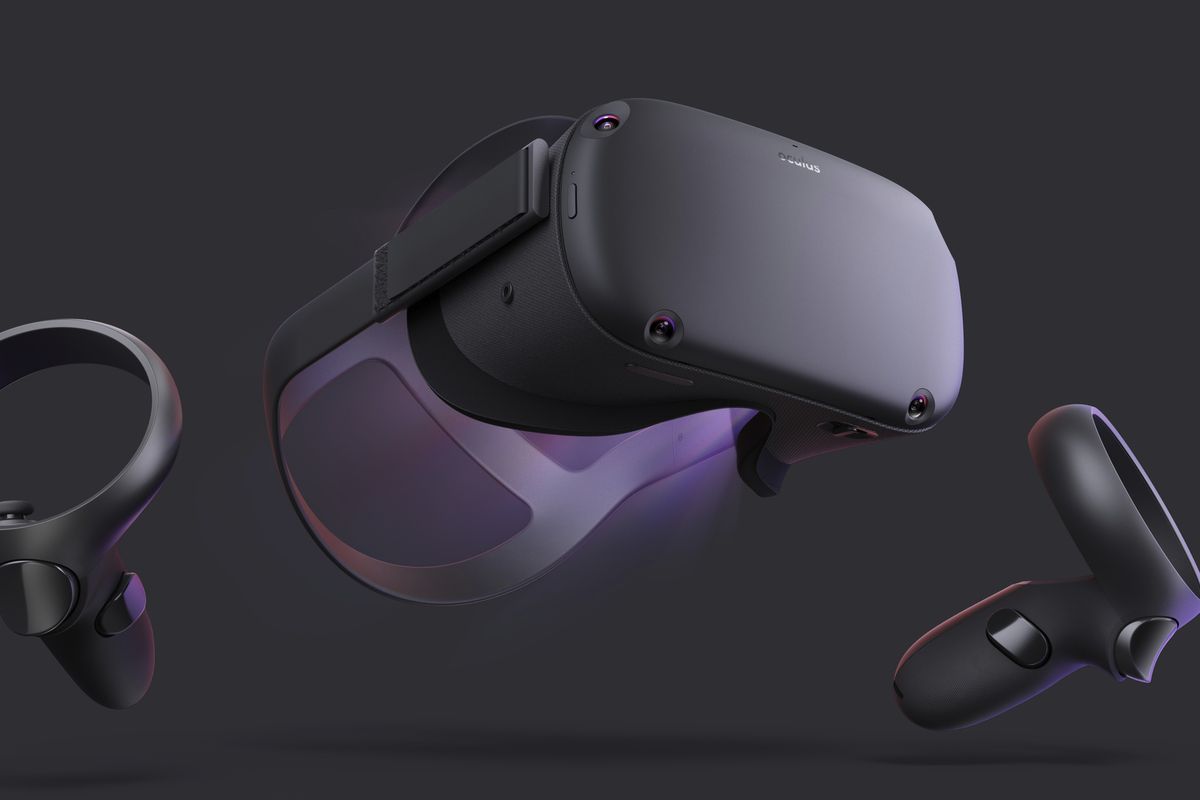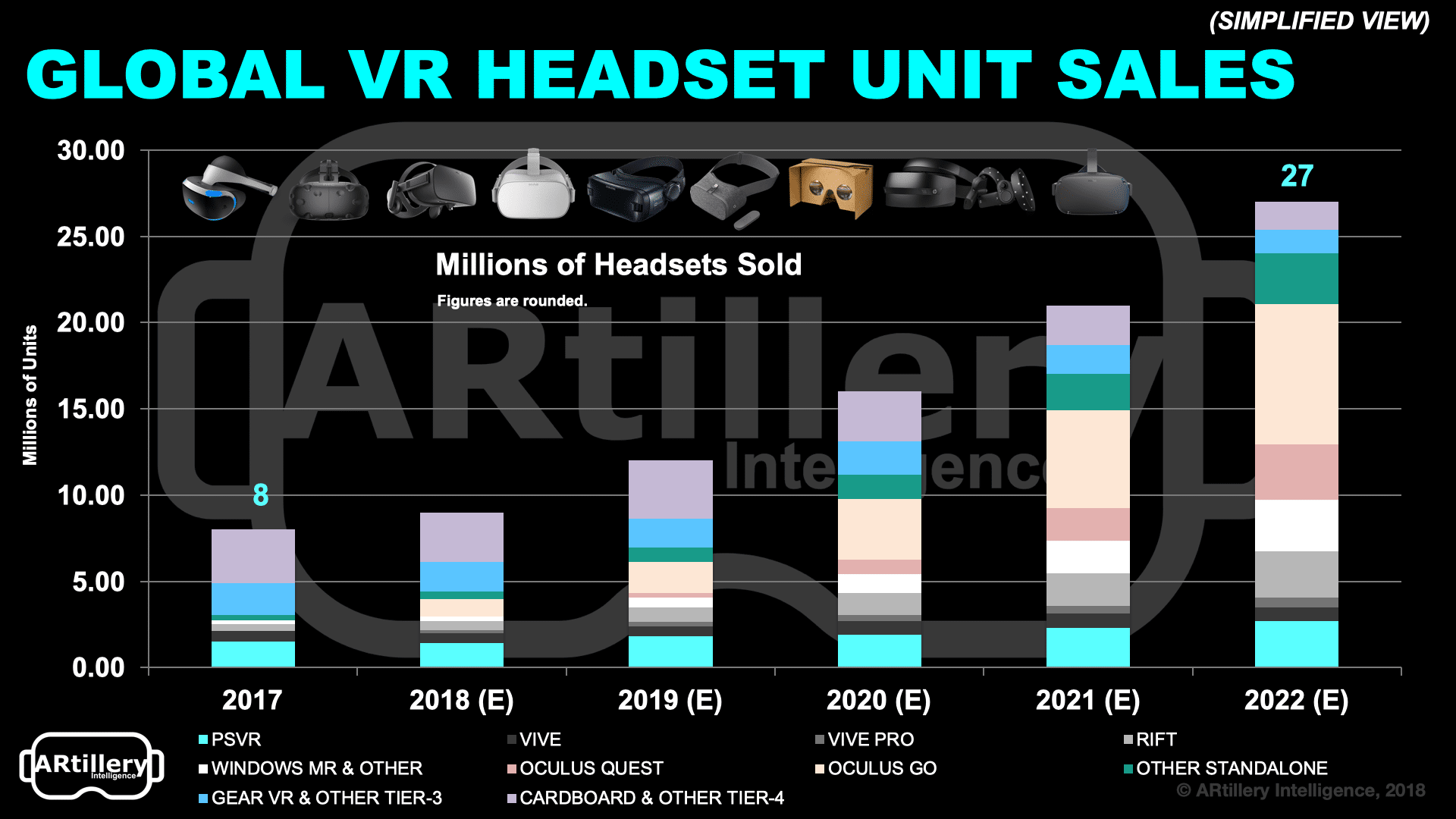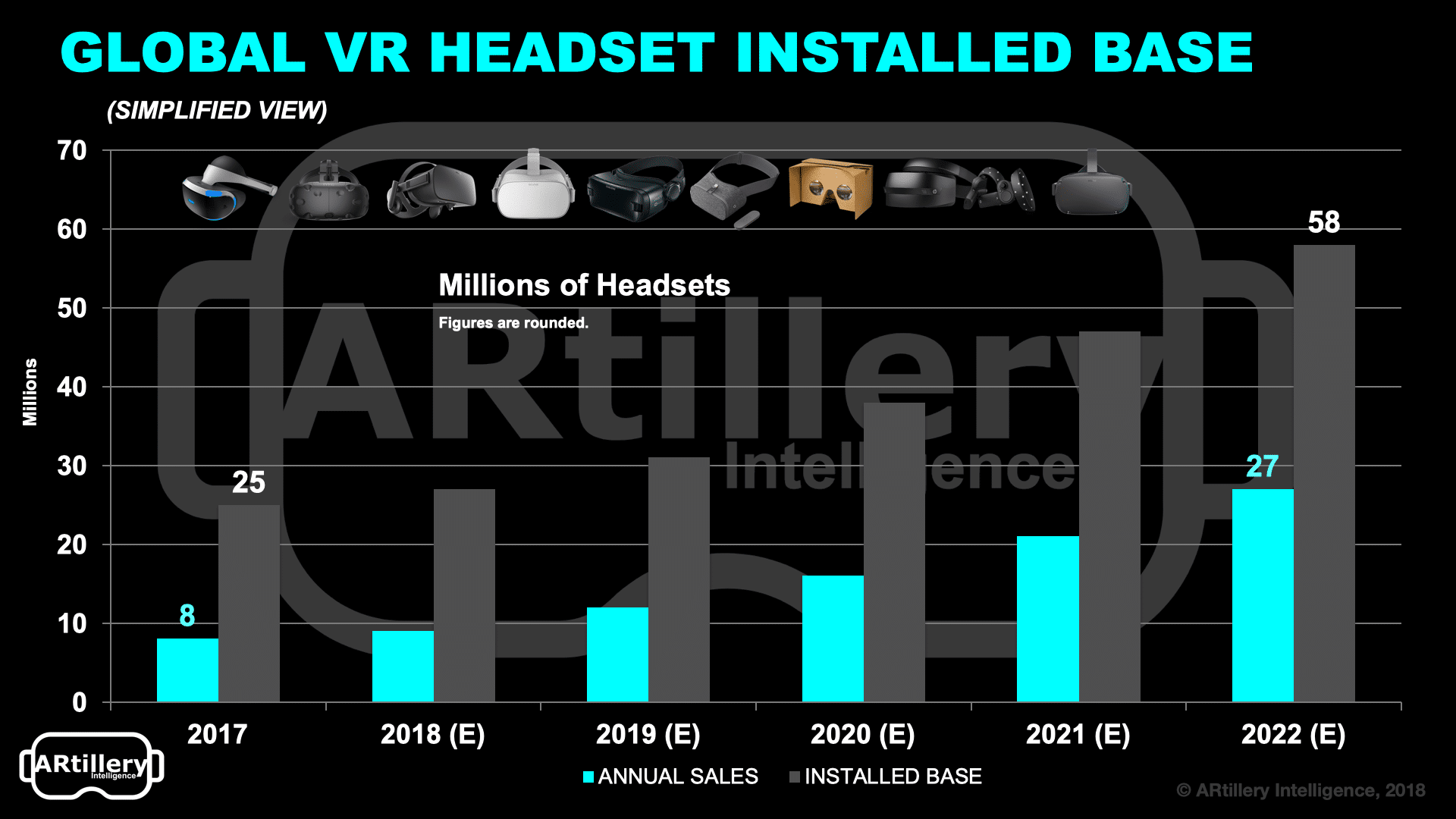
In honor of this week’s Oculus Quest launch, we’d like to revisit a key question: Will it accelerate mainstream VR adoption? Reviews are all positive and market factors align, but does it represent VR’s “iPhone moment” as some are saying?
In our 2019 predictions, we pegged Quest’s sales this year at about a quarter of a million units. Lower than other projections, this takes into account only six months of sales. Our Oculus Go projection by comparison is 1.7 million units, given a full year runway and lighter price tag.
Price is a big factor at this early and unproven stage of VR. ARtillery Intelligence consumer survey data with Thrive Analytics (n=1,959) indicate that demand inflects at $200 and $400. Those happen to be the all-in price points for base-models Go and Quest, respectively.
As background, Facebook’s long-game strategy compels aggressive pricing, a la loss-leader approach, to establish its platform. Early market share is the name of the game in platform wars as it attracts developers, which grow the content library to attract more users – a virtuous cycle.

Nintendo Switch of VR
The result for Quest will be a device with a quality/cost ratio that outperforms the rest of the market. Our favorite reviewers — the in-depth and insightful folks at Tested — agree with this take, and even assert that consumers should take advantage of Facebook’s thin margins.
“This is Facebook accelerating adoption by subsidizing and selling these at very little margin,” said Tested’s Jeremy Williams. “That’s something the competitors can’t necessarily do, but we as consumers can take advantage of it. This is a device that probably shouldn’t exist at this price.”
As such, Go and Quest are dispatched to bring more people into VR. Lower price tags mean spec compromises, but it’s a deliberate tradeoff (specs for scale). Think of it as the Nintendo Switch of VR — trading specs for overall experience and ease. This worked for the market-leading PSVR.
So what will the market impact be? We’ll continue to see aggressive price competition from Oculus, which will benefit consumers, accelerate adoption to some degree, and further contract the market. Go and Quest will meanwhile increase their unit market share as charted below.

Magic Number
Meanwhile, VR’s overall installed base will reach 31 million in 2019, on its way to 58 million by 2022. That’s still a fragmented set of headsets (including China) but could consolidate as the VR sector matures and as Facebook/Oculus’ platform strategy — per the above — plays out.
That overall installed base won’t reach the “magic number” of 100 million units in the foreseeable future. 100 million is a historically validated milestone for hardware segments to reach a “flywheel” cycle of incentive for content creation, followed by accelerated consumer adoption.
Another way to look at the 100 million figure is that there are very few products that reach ubiquity that have a price tag over $500. Your car, smartphone and flat-screen TV are on that short list but it’s an exclusive club. This is another reason price competition is taking over consumer VR.
The VR industry, led by Facebook, came to this sobering realization last year, and is well on its way to acceptance that VR won’t be the ubiquitous consumer product dreamed circa 2016. But that doesn’t mean it can’t grow into an opportune sub-segment of consumer entertainment.

One Good Reason
As for the size of that sub-sector, we project consumer VR to grow to $8.6 billion by 2022. That’s led by hardware in the near term, with software’s share increasing as it builds on a larger installed base, and as refresh rates (or game purchases) outpace hardware replacement cycles.
For anything greater than that, VR needs a more compelling reason to buy, or a killer app. We’re with Charlie Fink: outside of VR circles, there’s not really one solid answer to the question of why one should buy VR. There are lots of little answers, but that’s not going to cut it for regular folks.
Speaking reasons to buy a headset, a related question is what will Oculus Quest’s content library look like? If it’s to be the adoption accelerant that many say it will be, content will be king per Fink’s assertion. This is underscored by the fact that it will be a closed system, compared to Rift.
Existing VR that will translate best to Quest includes 6DOF experiences within relatively limited spaces that people set up with the indoor-only Insight tracking system. That correlates to untethered, though still room-scale, range of motion like Beat Saber which is a launch title.

RAZR Moment
Beyond successful ports like Beat Saber, native Quest titles will grow as its installed base attracts developers. Successful ones will eschew Rift-like textured graphics for processing-friendly polygon counts (think: Superhot) or cartoonish fodder — again a Nintendo-like approach.
“It’s very much about graphical styling,” said Williams. “There’s been six months of optimization, and developers are learning how to get the most out of this processor. I’m really impressed with what the first generation of games are able to pull out… It’s just going to get better.”
But any processing-driven compromises may be moot for most users. If Quest fulfills its goal to bring new users into VR, they won’t be slighted by “lesser” specs, for which they have no frame of reference. It will be an experience sell… and at the same all-in price of the market-leading PSVR.
In that sense, Quest is exactly what VR needs right now. It will put a dent in mainstream adoption and has already sold out its first batch. But device quality aside, larger market factors indicate that VR’s “iPhone moment” could still be a few years away. This is more of a 2005 Motorola RAZR.
For deeper XR data and intelligence, join ARtillery PRO and subscribe to the free AR Insider Weekly newsletter.
Disclosure: AR Insider has no financial stake in the companies mentioned in this post, nor received payment for its production. Disclosure and ethics policy can be seen here.
Header image credit: Facebook/Oculus
